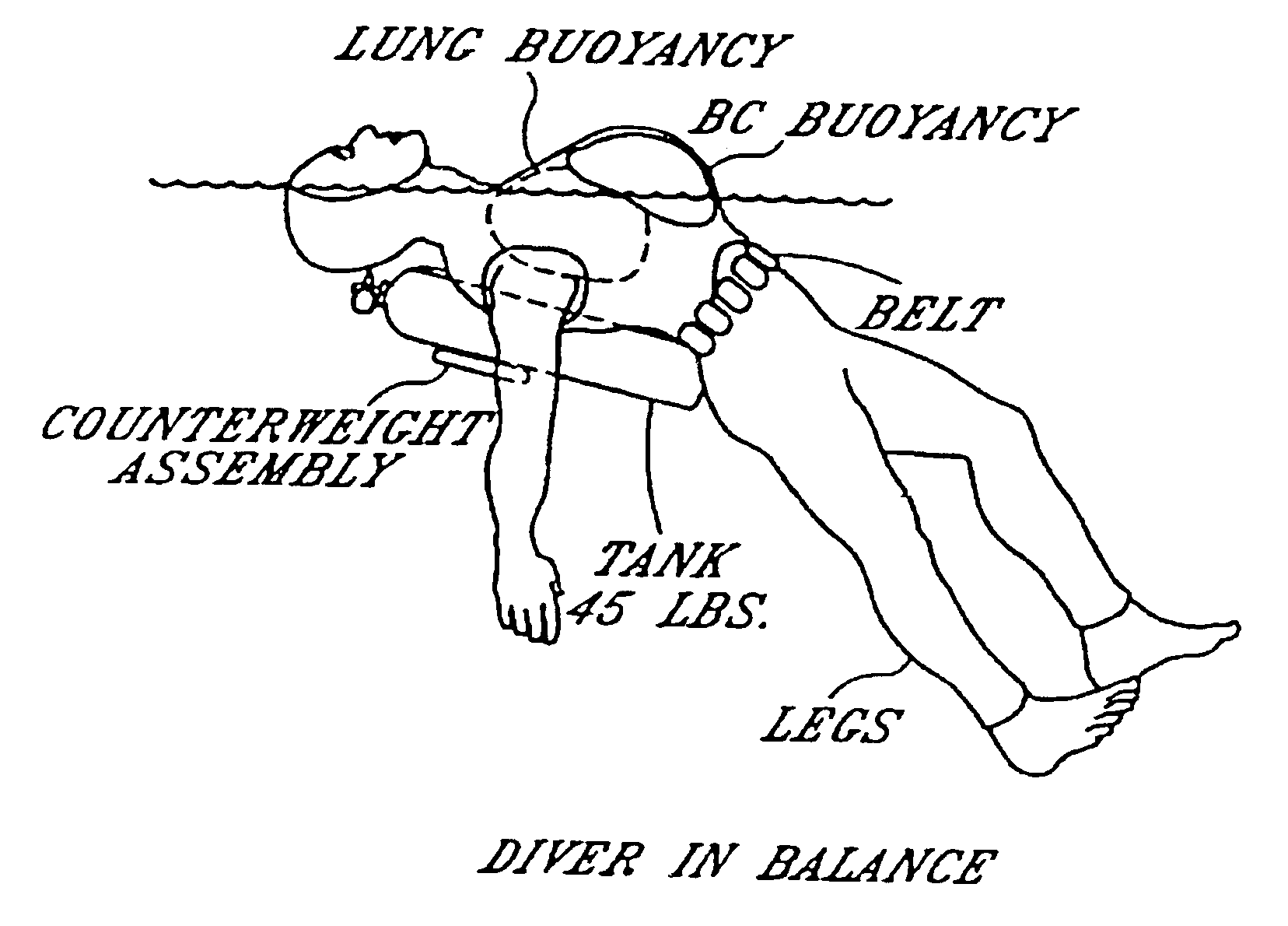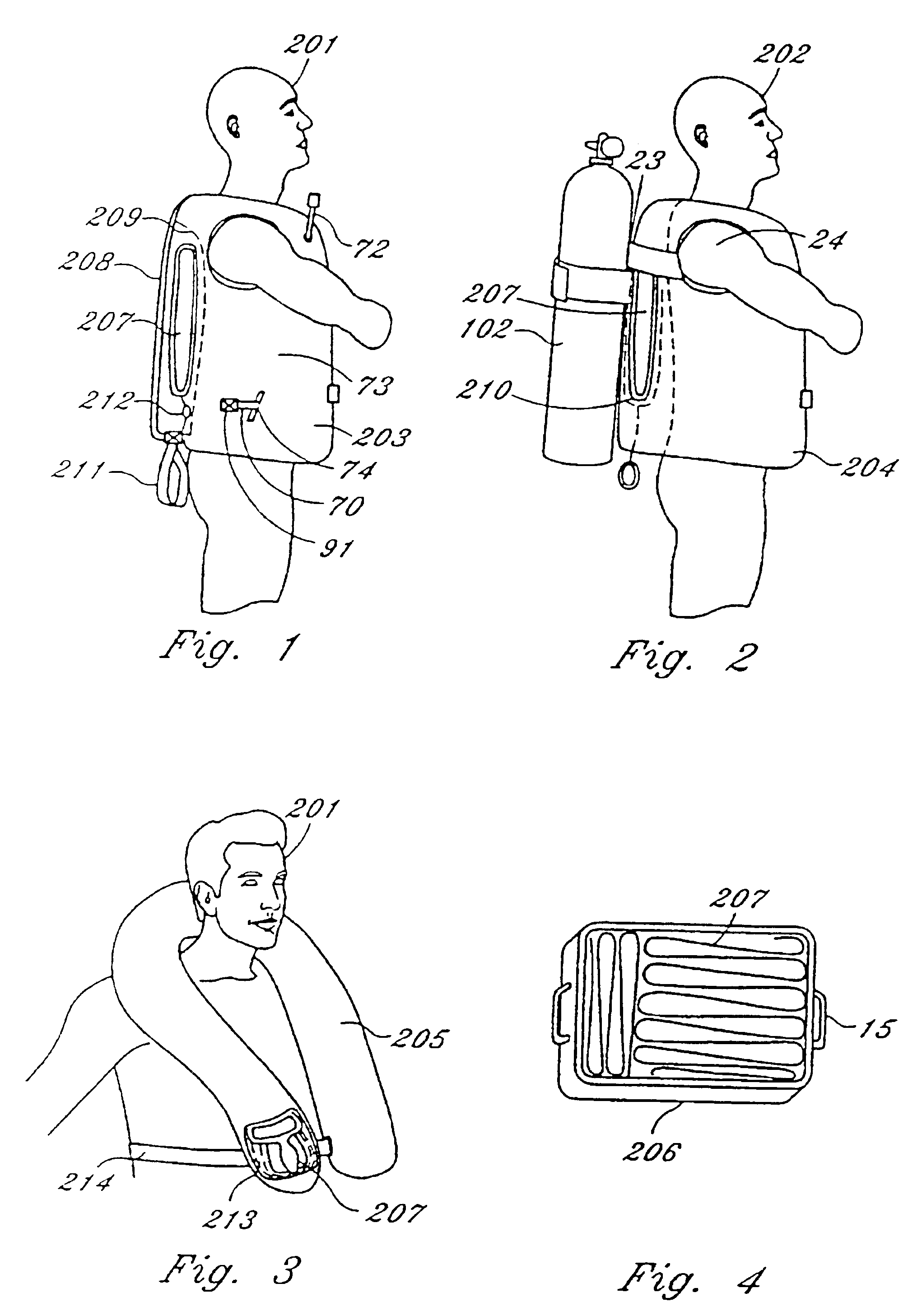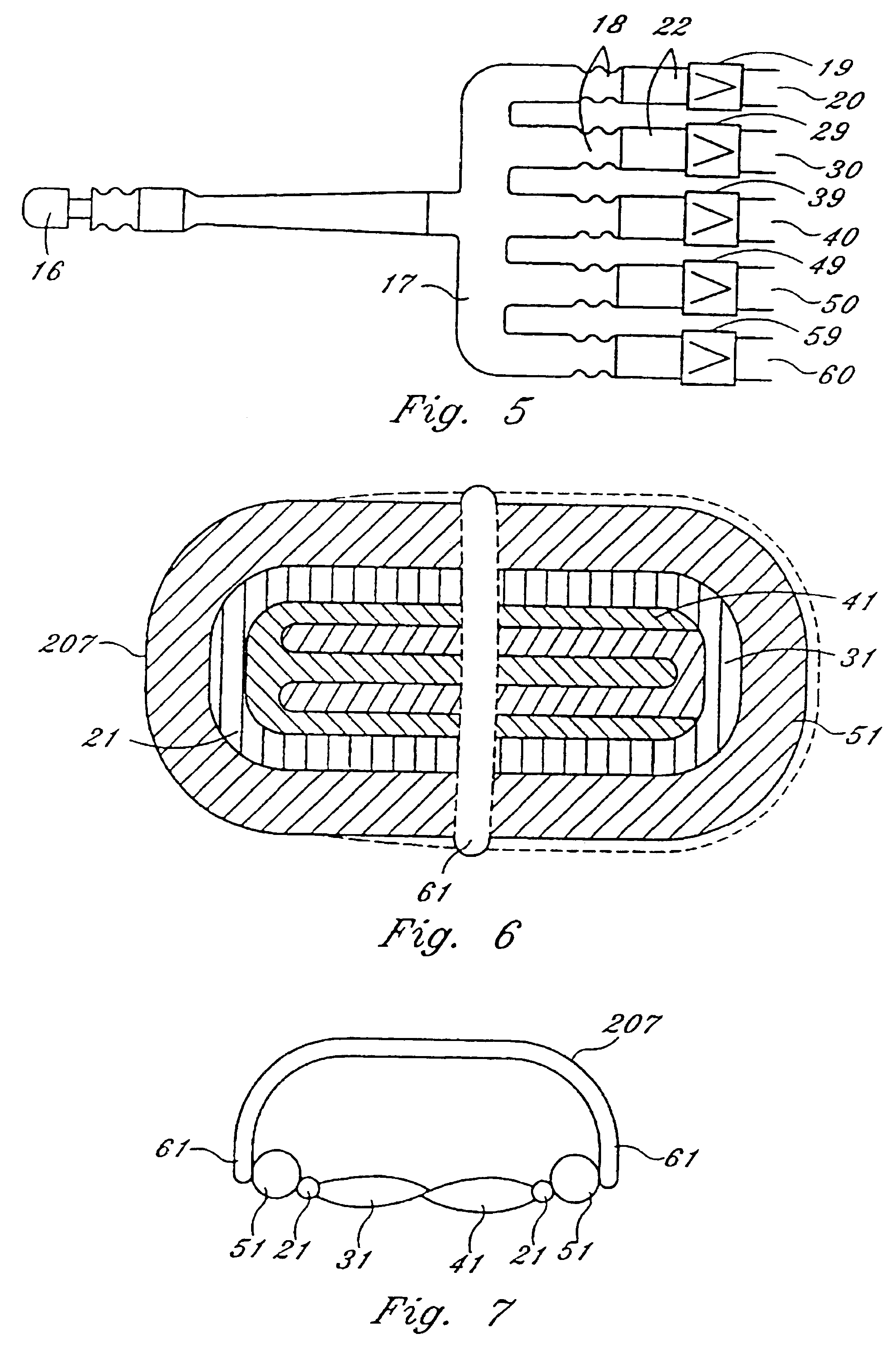Water safety and survival system
a technology of water safety and survival system, applied in the field of water safety gear, can solve the problems of life-threatening righting moment, unacceptable amount of pressure applied to the thorax of the wearer, etc., and achieve the effects of reducing bulk when deflated, improving appearance, and reducing cos
- Summary
- Abstract
- Description
- Claims
- Application Information
AI Technical Summary
Benefits of technology
Problems solved by technology
Method used
Image
Examples
Embodiment Construction
[0104]FIG. 1 shows victim 201 wearing a vest 203 that can function separately as a snorkeling vest, personal flotation device for boating or alternately hooked up to the primary bladder of a buoyancy compensator through quick release means 91 and hose 70 that is attached within pocket 74. Vest 203 can also be inflated through oral inflation means 72. Additionally, vest 203 can be incorporated with a ballast means 100 (FIG. 48). A multi-function rescue product and raft 207 is stowed within the back pocket of the lift vest between the outer wall 208 and inner wall 209. A retrieval strap 211 opens the pouch formed by wall 208 and wall 209, and is wrapped around raft 207 allowing the user to remove rescue product and raft 207, comprised of an expansible material allowing inflation chamber portion 73 located along the perimeter of the back to roll forward upon inflation.
[0105]FIG. 2 shows a diver 202 adapting an existing vest style buoyancy compensator 204 to carry the rescue product 207...
PUM
 Login to View More
Login to View More Abstract
Description
Claims
Application Information
 Login to View More
Login to View More - R&D
- Intellectual Property
- Life Sciences
- Materials
- Tech Scout
- Unparalleled Data Quality
- Higher Quality Content
- 60% Fewer Hallucinations
Browse by: Latest US Patents, China's latest patents, Technical Efficacy Thesaurus, Application Domain, Technology Topic, Popular Technical Reports.
© 2025 PatSnap. All rights reserved.Legal|Privacy policy|Modern Slavery Act Transparency Statement|Sitemap|About US| Contact US: help@patsnap.com



